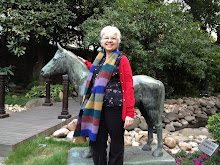Children’s stories follow the mythic Hero’s Journey.
There are only two or three human stories, and they go on repeating themselves as fiercely as if they had never happened before.
--Willa Cather, in O Pioneers!
Some years ago, a writers’ workshop introduced me to the concept of the “hero’s journey,” the universal story structure that creates the most satisfying plots. Over time, my notes were lost due to the weathering and natural attrition that occurs in my home office, but to my delight a friend loaned me Christopher Vogler’s The Writer’s Journey: Mythic structure for Writers, which refreshed my memory.
According to Vogler’s interpretation of the model, all stories, whether myths, fairy tales, dreams or movies, consist of universal structural elements:
Ordinary World
Call to Adventure
Refusal of the Call
First Threshold
Tests, Allies, Enemies
Approach to Inmost Cave
Ordeal
Reward
The Road Back
Resurrection
Return with the Elixir
Not all of these elements are immediately recognizable in every story. (For a simplified telling of the “hero’s journey” see the creative writing lesson in The Warlord’s Fish study guide, FOR TEACHERS section @ http://virginiapilegard.com ) However, being aware of the elements of this time-honored formula gives children’s authors a powerful tool for creating pleasing stories.
The tale begins on an ordinary day. The storyteller introduces her hero in his everyday world, and then allows something extraordinary to happen—a call to adventure! The hero’s quest, the thing he wants most, is defined by the call. Perhaps he must avenge a wrong, seek a prize, or discover an answer.
At first he refuses the call. His refusal provides an important plot devise, helping the reader understand how risky and life-changing the journey will be. During this part of the story, the hero examines his objectives. What is he willing to risk? How important is his goal?
He soon overcomes his fear and commits to the journey, only to be tested at the first threshold. The first of many obstacles occurs—the thing that would keep him from entering the "special world" of the adventure. This test needs to be a dilly to convince the reader she’s being invited on an exciting journey. Remember the story must increase in intensity, so even though this is a worthy obstacle, it must be less dramatic than the ultimate ordeal to come.
Through this first challenge, the hero begins to sort out his friends, or allies, and his enemies. In this test, or immediately before, the hero meets his mentor, usually an older friend, who helps equip him for what is to come. Often the hero changes costume to something suitable for the battles ahead. (In a romance, the heroine receives a stunning new outfit. In spite of sexist language the hero’s journey is not gender exclusive.) The mentor offers the hero gifts he will need. Gifts may be magical, spiritual or something as simple as the advice: “Breath. Hang in there. You’re doing fine. You’ve got what it takes to handle any situation, somewhere inside you” (Vogler, p. 125).
The approach to inmost cave translates into “Have fun storming the castle,” in the movie Princess Bride. Now the hero must move deep into the “special world”. The approach provides a time for planning, more obstacles and the realization that the hero’s options, except the one that leads to his ultimate test, are blocked.
At this stage the hero faces his greatest challenge, the ordeal, and walks away the victor with his reward. His success turns out to be short-lived. He risks losing his reward during tests on the road back. He must return to his ordinary world. His journey has changed him allowing him to experience a type of resurrection and the storyteller must make sure the hero faces one last obstacle to show that he can apply the lessons he learned.
In the end, the hero returns home with the elixir, the object of his quest and the resolution to his adventure.
Vogler applies these elements to movies from The Wizard of Oz to Goldfinger. If a children’s author can apply them to her own story, she stands a chance of writing a classic.
And, having reread it, I promise to return The Writer’s Journey: Mythic structure for Writers, Michael Wiese Productions, Ventura, 1998, to friend Judi Hussain (creative force behind http://beautybread.blogspot.com) . I’ve probably had her book ten years, but it happened to surface in one of my office weathering and natural attrition cycles.
Tuesday, November 10, 2009
Subscribe to:
Post Comments (Atom)

Never mind about returning the book--another friend of ours happened to gift me with a copy of The Writer's Journey, not knowing that I already had one. So we both possess a real treasure!
ReplyDeleteThanks, friend. And thanks to your more generous friend.
ReplyDeletewow, this is great info for me! Thank you.
ReplyDelete